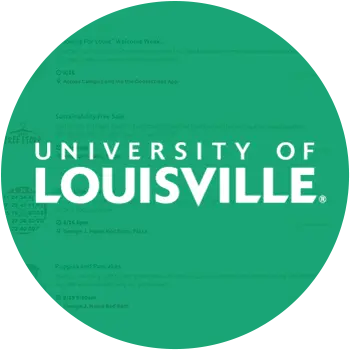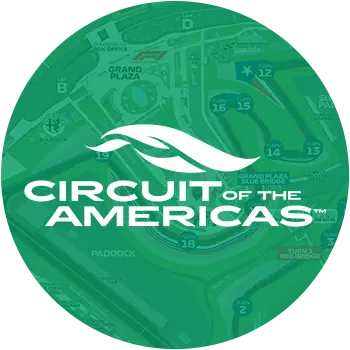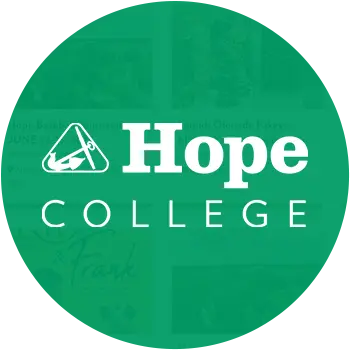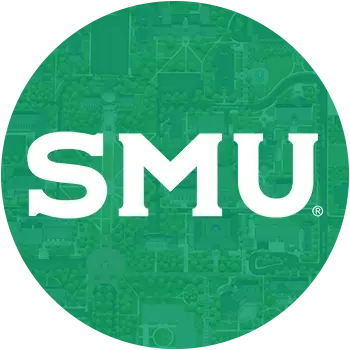Shiro Hatori
Okay, hello, everyone. Welcome to the higher ed demand gen podcast hosted by concept 3d. On this podcast, we just discussed higher ed marketing topics on creating and capturing demand. Before we jump in, we have a quick message from our sponsors, concept 3d. Concept 3d Its purpose is to foster connections through technology elevating the way businesses connect with their community by leveraging the power of events and location. If your school needs an updated interactive map, centralized Events Calendar or virtual tour, please reach out to concept 3d at concept 3d dot com. Thank you. So let me introduce myself. My name is Shiro and I will be your host today. And I am very, very excited to introduce our guest, Ryan Moore, Beto today. Ryan, thanks so much for joining us. Really excited to talk with you Shiro. Awesome. And before we jump in, I do want to ask, can you tell us a little bit about yourself your role and what you’re up to today? And at the very end? The icebreaker? What do you love about higher ed?
Ryan Morabito
Well, thanks for the opportunity to talk with you, Shiro. I’ve been in higher ed marketing for over 25 years now it’s been a privilege. I’ve seen the elevation of our marketing function, which is really exciting. And we still have to destroy some of the status quo and myths around marketing, and how we can ultimately tell our story better to students and donors. So what I love about higher education, there’s a lot and I think so much is just an unrelenting focus on students in helping the transformative power of education to meet students where they are.
Shiro Hatori
Well, that thank you so much for sharing that. And you know, you’ve been in hired for 25 plus years now, specifically in marketing. What are some of the good things you’re seeing other schools doing in marketing today?
Ryan Morabito
Yeah, great question. Shiro. I think part of what we’re recognizing is that now we have a seat at the table, many colleges have recognized the importance of marketing. And so having a senior leadership role, I think, is one of the things that we all celebrate. And also know there’s still work to do. There’s a gap of understanding on many college campuses about what marketing is. And we as marketing leaders have a great opportunity to bridge that gap. And part of that, as you and I know, is that most people gravitate towards the promotional p of marketing. And we recognize there’s a lot of other factors at play. And in colleges and universities, one of those primary factors is the programs and services these institutions are offering. So as we move the conversation away from what are we promoting what is on the Billboard, what is our tagline, to a more in depth understanding in terms of how we are positioned how we compete in a very competitive marketplace for students and donors. So we’ve seen progress, zero. And we also recognize we’ve got a lot of work to do in terms of elevating the marketing function.
Shiro Hatori
Yeah. And you know, talking about getting a seat at the table, how are you communicating and aligning and educating the the leaders like the president, the board that you know, solidifies your seat and actually gives you a voice as well? Like, how are you you know, how communicating aligning? What are some of the tactical ways you’re actually improving, and also bringing more budget or resources to the marketing teams?
Ryan Morabito
Yeah, absolutely. And when you think about the dashboards that schools are creating, particularly around marketing, I think it’s a great way one to make sure that we’re aligned with what other leaders are expecting. And also to come up with some common definitions around what success looks like. So I love working with leadership team. There’s some obvious things as you know, Shiro that we would look at from a marketing standpoint, for tuition driven schools, we know enrollment is going to be a really important dashboard indicator. We also know fundraising. And so as we certainly look at the intentionality around tying things to revenue streams, there’s other things that we can measure along the way. I think the other part that dashboards do is allow us to create realistic expectations. Getting a student to enroll is a big ask getting a student to deposit is also a big ask. So what are those transitional calls to action that we can measure along the way that will show us progress towards ultimately proving our enrollment and marketing? And so some of those as we look at from an enrollment side, are we increasing awareness? Do we have more inquiries and applicants, that would be one way that we could look in terms of gaining momentum and brand awareness? Every school Cheryl wants to be a preferred brand, but most schools aren’t making the right investments to be able to be top of mind when students are considering them. Pepsi and Coca Cola are very well known brands, and they spill still spend an excess of $4 billion a year in marketing to make sure that they are that preferred choice. So when I think about these dashboards, what else are we measuring? As we look at leading and lagging indicators? In one would be an institution’s perceptions. people’s behaviors are based on their perception of reality and not reality itself. So do we have perception data that show what people currently think of us? So that through a very conservative marketing and communication effort, we’re able to influence those associations over time? How can we emphasize those positive associations get rid of any negative associations, and for a lot of schools, there’s many neutral in associations, we just don’t know enough about them to develop an opinion. And we can use that opportunity as marketers to build that influence. So I see dashboards as a great way to get leaders and the rest of our campus community aligned. And the last thing I’ll say is that it’s another chance for us to at the highest level to be in agreement about our institutional marketing priorities. riving instant institutions allow their marketing teams to say no, it’s strategic. If we say yes to everything, it means that we’re not being most intentional about what is going to drive those things that are going to have the greatest impact. So when we elevate these dashboards in these institutional marketing priorities, it allows our teams to concentrate on those things that are most important.
Shiro Hatori
Got it is do you have a common theme around what? What institutions should be saying no more to like, is there a common denominator there?
Ryan Morabito
Well, the easy one, I think is around the holidays, I watch in terms of the distraction factor to get a holiday greeting card out the door. And you and I would agree it’s really important. But what is not being done in terms of communicating not only with students and donors, but those that influence them. So with a very clear framework in hand, it allows to be able to say no might mean not right now. But there’s a lot of examples Shiro where being busy doesn’t necessarily mean being strategic, and give our teams a roadmap in terms of where we really want them to concentrate.
Shiro Hatori
Gotcha. And I had a question around awareness, you know, within your dashboards that you consult with to some institutions, like, how do you measure awareness? And how does digital play a part in that awareness? Measurement?
Ryan Morabito
Yeah, I think so much. We know that our website is our most important marketing tool, it’s our face to the outside world. And you and I know there’s also a gap at many colleges in terms of their online presence. So when I think about awareness, what do our website traffic look like? What in terms of new visitors unique visitors, and how much time our visitors spending on our site? So outside of some traditional metrics, we can really look and say, Are we getting more eyeballs, in terms of our marketing, in the web sites, a very tangible way to look at are we able to increase awareness. And those perception studies, again, as we draw a circle outside of the typical college and university allows us to measure in terms of those current perceptions and how aware people might be of the things that our institutions are doing.
Shiro Hatori
Got it. And, you know, maybe the tide is shifting, but has it been hard to communicate like, or to at least train marketing leaders to present to the board or to the president like that? numbers like traffic or website engagement metrics, time on page, those are actually important metrics? Before, you know more of those bottom funnel actions, like inquiries or applications, like our is that has that communication been difficult, historically? And how have you overcome that?
Ryan Morabito
Yeah, and I think, you know, there’s a tendency to just think in terms of instantaneous, so we write in a campaign we invest money, and is that going to translate to more students and hope heroes? Yes, but we know it’s going to take some time. So again, this dashboard is a great way to say what are we doing before we’re able to enroll more students and increase our fundraising dollars. And so I think establishing a set of metrics, and also in terms of having comparative data, schools, a lot of different data points and information that in many cases they don’t use. And so what we want to be as very focused in terms of those types of metrics we are going to look at. So again in the enrollment funnel, some Very important things that we can look at, on the website, some really straightforward metrics that we can look at as we hope to improve those dashboards around enrollment and fundraising, and thriving institution are going to take measurement at certain points along the year. And then they’re also going to be very targeted in terms of the comparative data they collect over time. So one question we’d love to ask graduates of an institution is, would alumni recommend this university to prospective students. And we want that standardized instrument, we want those same survey Shiro so that we can compare apples to apples over time, in schools, in some cases, they collect a lot of data. And the question is, so what our are we going to use that information to guide our enrollment and marketing strategies?
Shiro Hatori
Got it. Thank you. And it sounds like, you know, you’re trying to figure out the story and the narrative how things are, are working from the student perspective. But on the flip side, you know, I know you’re very strong on, you know, talking about the strategic narrative of an institution and creating that, so that you can differentiate and, you know, stand out from the crowd. Can you tell us a little bit more about what you mean there?
Ryan Morabito
Yeah, absolutely. In grounded with a an underpinning of market research that really allows us to assess our current reality. I work with schools to really help them drive a positioning strategy. And as you referred, we can think of that as a strategic narrative. There’s a lot of noise out there Shiro, you. And I know that and we better be crystal clear in terms of what we want people to know about us. So narrative allows us to provide that clarity, get people reading from the same song book and telling our story consistently over time. So if you think about outside of academia, and kind of this market creation and looking at a new category, Tesla, great example, old school, fossil fossil fuel burning, new school sustainability, how can we move away from everything that all the other institutions are offering? So I challenge institutions to be bold and unapologetic? How can we still be true to your mission, but to make sure that it’s still relevant in 2023 and beyond, and striking that balance is very critical. It’s a lot of work to mobilize a campus to get on the same page. And it is worth the time in the investment to do that. Because with a narrative and a clear positioning strategy in place, then we can move to the next phase of branding Shiro, which is the creative execution, what are the words and pictures that are going to motivate these audiences to a call to action. And with an underpinning of a very clear, intentional strategy, we can make sure that our voice is consistent over time. Branding is really dependent on two core principles. The first one is differentiation. And the second one is integration. And we knew no schools really are challenged with carving out as a differentiation strategy that makes them different from every other college and university. Some schools have been able to do that programmatically. I told you about the example of Dort University, a gentleman named Eric tutor just several weeks ago, his title is director of emerging markets. And really kind of this where to where does higher ed go next, as we think more intentionally about our programs and services, and what they’ve done is established a partnership with John Deere, who’s a very important regional company of theirs, and they’ve developed programming to meet them where they are. And it’s a great example being still true to dort University’s mission, but making sure that their programmatic offerings are relevant. So I think we’re going to continue to see examples of how schools can develop market savvy programs that are their institution, and allows them not to compete against every other school that is offering in marketing very similar things.
Shiro Hatori
And you know, as a marketer, my brain always just like, how do we take that program? And how does that become strength for the school and the brand itself? And I imagine like that’s the course, or curriculum they can now market specifically, as opposed to just as the entire brand and so I think that helps support and align some of those departments, which I think fundamentally are siloed from each other, like the programming in the in the marketing departments.
Ryan Morabito
Yeah, absolutely. Cheryl, and that’s another trend. It used to be that programs were developed in isolation of our marketing colleagues. And right now iving institutions were at right at the forefront of Those conversations are seeing what that market demand is not only on a national level, but regionally, we’re seeing where we currently have strengths and advantages that can be even reinforced more by a strategy and a partnership zero, with, with corporations outside of our campus borders. So as you and I get schools to move away from the promotional piece of marketing, I’d love them to think much more creatively and strategically about partnerships. And I think dort University is a great example of thinking about an intentionality in an innovative way that still make sure that their mission is relevant.
Shiro Hatori
Yeah, that’s a that’s a perfect example. I feel like the example came before my question that I wanted to ask, which is, which is great. And, you know, I’ll ask him just to just just so it’s out there directly, but how can marketing, you know, really support and work with current students so that they can get their focuses and their results more aligned with departments like, you know, curriculum programming services? How can they align better, and why is it important to marketing?
Ryan Morabito
Yeah, love that question. And if you follow me on LinkedIn, you know that I’m not a big fan of competitive analysis. I watch schools spend a lot of time and money looking at their competitors. And I would much rather see them with an intimate knowledge of studying their students in their future students. And so we realize that they’ll tell us probably everything we need to know Shiro about our competitors. And we’re able to learn so much in terms of why they arrived at our school. I love asking students what surprised them most about the experience. So we can be more intentional about sharing that with future students. So there’s an absolute goldmine in terms of the accessibility of our current students. They’ve gone through this process a relatively short time ago, they had a lot of options. And we can learn a lot of great things to not only impact our marketing, but can impact the experience that we’re offering
Shiro Hatori
of that. And I love what you said right before this call, you know, I said, marketing always as a better opportunity, highlighting students success if students are more successful. Yeah, I think you pointed out making, you’re making a promise as a marketer to a student, and so the institution has to deliver on it. And that kind of sealed the deal for me in terms of time, and as between those two different departments.
Ryan Morabito
Yeah, and it sounds intuitive, Shiro but telling outcomes is the best thing we can do at colleges and universities, telling outcomes of our graduates telling them stories of what our current students are doing. And once we’re able to kind of check that box, we can be even more specific tying outcomes to academic programs. So that over time, if I’m interested in a certain area, I can not only look at the aggregate, I can look at outcomes broken down by program and major. And students love to see what graduates are doing. I’ve done a lot of research in this over the years. And students want to hear what recent graduates are doing. I’ll always remember a student in our focus group looked at me and he said, Ryan, they graduated 20 years ago, they should be successful. I want to know what students are doing two and three years upon graduation. And I think it’s another great opportunity to tell those stories.
Shiro Hatori
I love this topic. And I’m wondering if you’ve seen some good examples, recent examples, in the best way to deliver that like, you know, what, is a written format, like a blog or more of like a case study important? Or are you seeing more success in like live video formats? What are you seeing working that’s resonating?
Ryan Morabito
So I think it’s all of those in our digital world, Shiro huge fan that how we collect that outcome, another opportunity to partner with our faculty colleagues. They’re the gatekeeper of the students. Look in terms of collecting that great success story, and then reuse, recycle repackage, it obviously would play really well on our website, our face to the outside world, it would play well on social media. And then you think about other distribution channels print is not dead people still want to understand in terms of the program of study, professors that they’ll be working with. So I think we have a great opportunity as we collect these outcomes not once or twice a year, in a very systematic way to continue to infuse in all of our marketing, these great stories of success. And I think it’s important to tell enough story so that my skin color doesn’t matter. My age doesn’t matter. I’m able to really say I can go to that institution and thrive as well.
Shiro Hatori
While there thank you so much, Ryan, thanks so much for all your knowledge, share and insight. I was wondering where audiences listeners could connect with you to learn more about what you’re doing and the amazing LinkedIn posts and other posts you’re making online.
Ryan Morabito
Yeah, I appreciate that very much Shiro. I appreciate the folks on LinkedIn who have helped boost the signal in terms of shattering the status quo and marketing. Love for you to connect with me on LinkedIn. My email address is Ryan at the number five degrees branding. And I’d love to connect with you and see how together we can continue to move the needle on this important discussion.
Shiro Hatori
Amazing. Again, thank you so much, and thank you for listeners for tuning in. Please catch us in the next one. And of course if you are in need of an interactive map, fence solution, or virtual tour, please reach out to concept 3d. Thanks again everyone.










